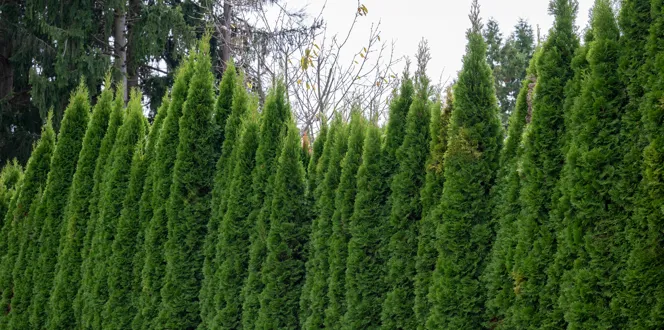Once winter shows up, usually you’re more concerned with remembering to put your ice scraper in your car and keeping your driveway clear of snow and ice.
These winter chores rank a bit higher on your worry list than your lawn, which all but disappears under the snow. But even though your grass is the furthest thing from your mind, that lawn you love requires some attention to prevent winter diseases from settling in.
In fact, later in winter you might be asking yourself, “What is this white or pink fuzz on my grass?”
That would be snow mold on grass. What is snow mold? There are actually two types of snow mold you can find on your home lawn: gray snow mold and pink snow mold. Gray snow mold attacks your grass when there’s been extended periods of snow cover, where pink snow mold can appear with or without snow cover. Both are fungal diseases that create patches of whitish gray or whitish pink grass blades in late winter and early spring when given the right conditions, and they can wreak havoc on your lawn.
Let's talk about how to prevent snow mold and how to get rid of snow mold in your home lawn.
What Causes Snow Mold?
Understanding snow mold in grass begins by knowing what causes it.
Gray snow mold can show up on most types of grass, especially after long periods of snow cover. But other weakened lawn conditions can also cause this type of snow mold, including improper drainage and snow accumulation on unfrozen ground. It’s commonly found in the northern regions of the U.S. that get snow for three or more months at a time.
Pink snow mold, on the other hand, usually impacts annual bluegrass, bentgrass, Kentucky bluegrass, and ryegrass. It’s most active during periods of high humidity in areas where temperatures range from 32 to 60 degrees Fahrenheit. It’s also more susceptible on grass that lacks nutrients and has a lot of dead layers of grass, which is called thatch.
Snow Mold Symptoms
What are you looking for when you’re attempting to assess whether or not your grass has snow mold damage?
With pink snow mold, you’re looking for sunken patches of thick, pink-ish white grass blades in winter and spring.
Gray snow mold is a bit different. You’re looking for light brown patches in your lawn with a potential gray-black colored fungus along the edges.
How to Treat Snow Mold
Both types of snow mold on grass can be easy to manage, depending on the severity.
You can start by lightly raking the impacted areas of turf to remove the dead grass and allow room for new growth.
Fungicide treatments can be helpful if applied before a heavy snowfall, but aren’t always necessary due to weather’s unpredictability and the relatively easy options you have afterward to remove snow mold in grass.
Resuming proper lawn care including regular and correct fertilization, well-timed and planned weed control, and annual aeration and overseeding, will help restore lawn health after snow mold damage.
When To Repair & Reseed Lawn
Does snow mold kill grass? Unfortunately, both gray snow mold and pink snow mold can result in some dead grass.
This means that even though light raking may help remove snow mold, you may still have some bare areas you need to fill in.
To do this properly, rake out stems of matted grass and reseed the area to encourage new growth.
How To Prevent Snow Mold
Now that you know what snow mold in grass looks like and how to get rid of snow mold, let’s talk about the best way to battle any lawn disease: prevent it.
Since snow mold likes stressed lawns with a lot of thatch, start by decreasing soil compaction. Annual aeration can help do this, encouraging more oxygen, water, and nutrients to reach lawn roots where they are needed. This results in an overall healthier lawn.
Next, improve drainage to limit excess sitting water, reducing the probability of all types of lawn diseases.







